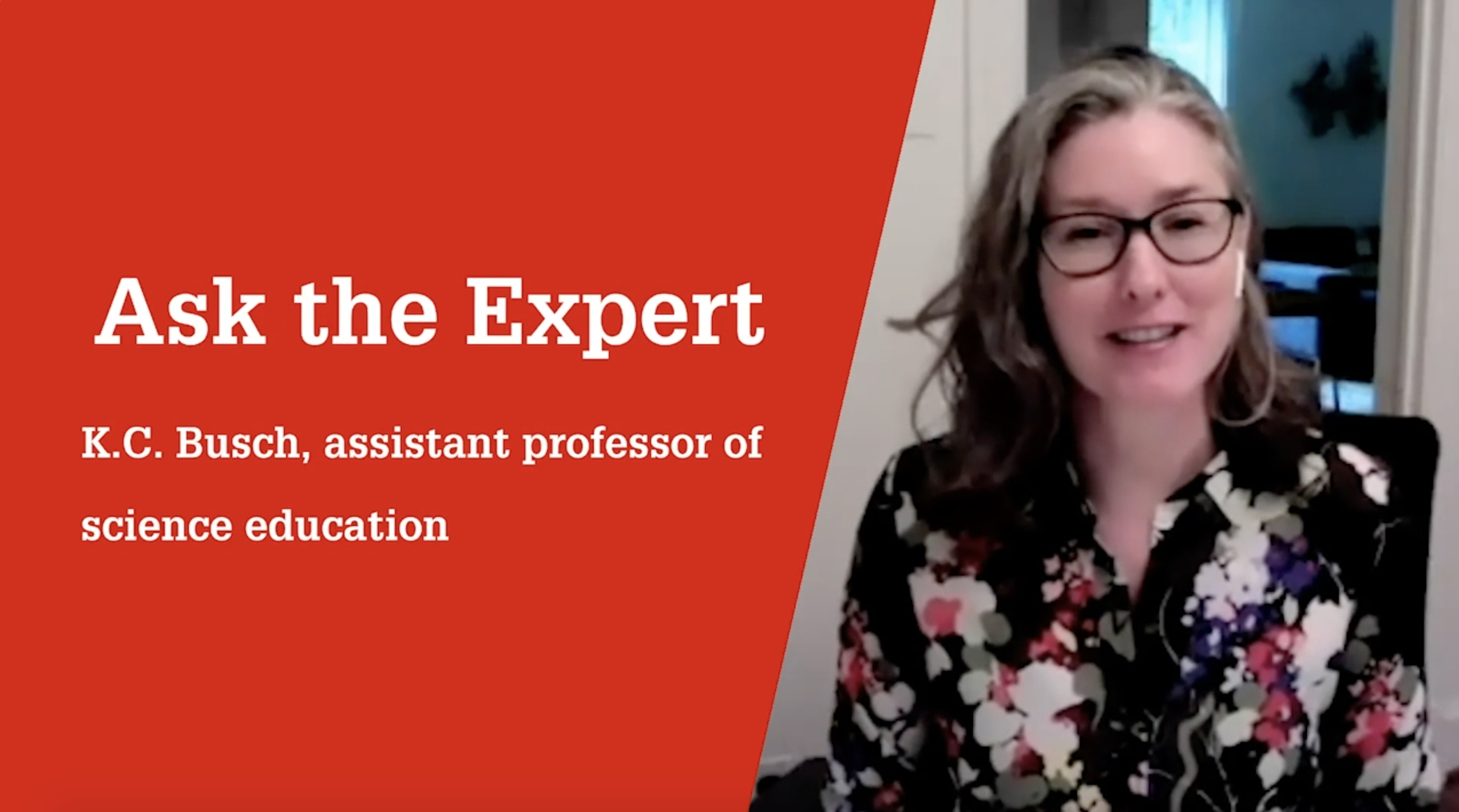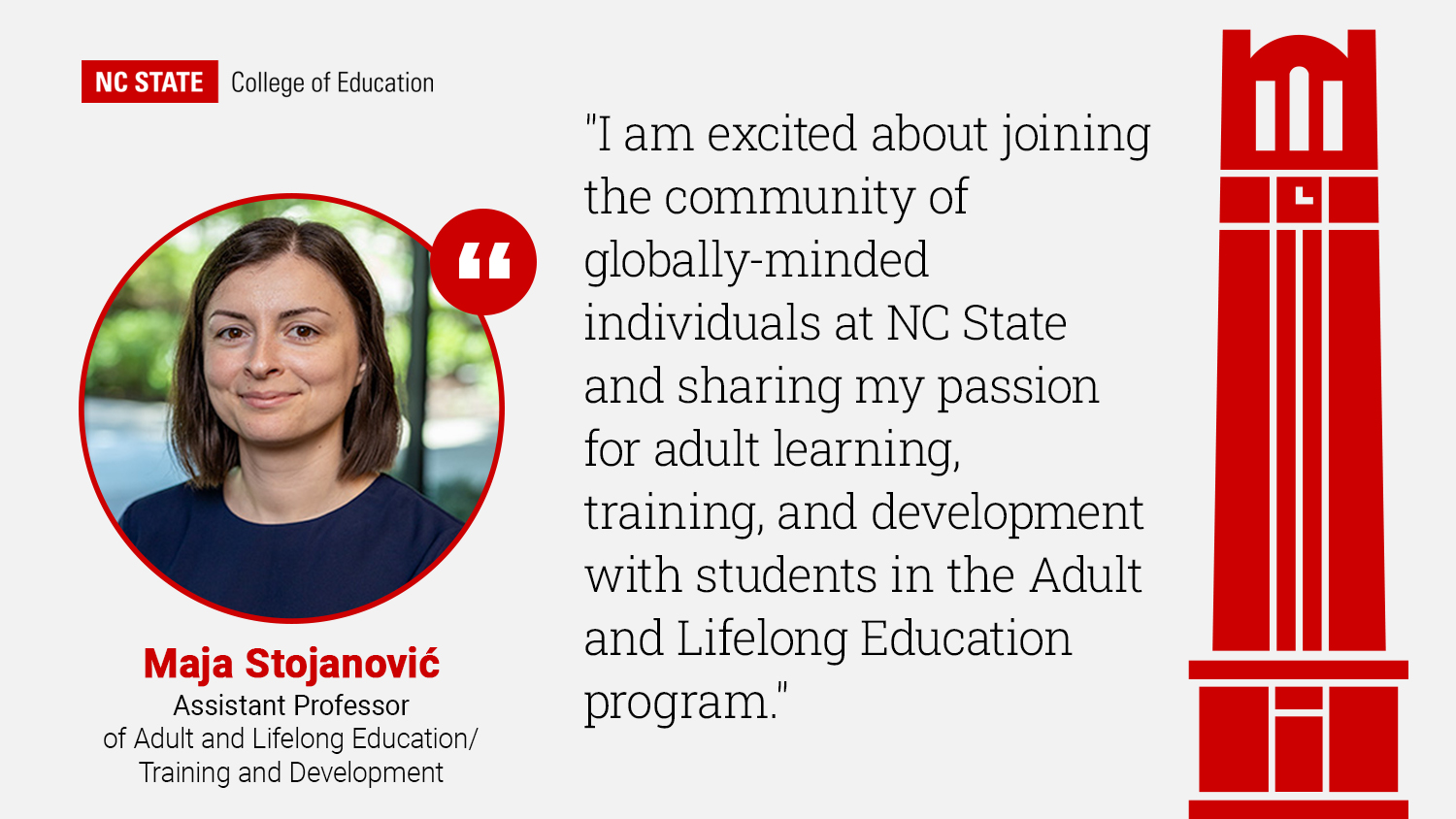Ask the Expert: How Can Teachers Address Climate Change in the Classroom? ‘I Believe That Explicit Discussion About Why There are Differences in How We View Climate Change Would Do Well in a Classroom,’ Says Assistant Professor K.C. Busch
Addressing the topic of climate change in the classroom involves more than just teaching about science and data, says K.C. Busch, Ph.D., an assistant professor of science education in the NC State College of Education.
Busch, whose research focuses on climate change education with an emphasis on improving youth activism, said that there are two spheres of climate change information. There is the scientific side — where knowledge about how climate is created, how it has changed over time and the impact of those changes are shared — but there is also a social side.
“My research has shown the importance of social norms, which is the question of what we should do about climate change, and efficacy, which is what we can do about climate change,” Busch said. “If we just provide youth with the science and the knowledge, it might be an incomplete path to reaching climate change action.”
Currently, climate change is taught in public schools in about 20 states that have adopted the Next Generation Science Standards, but those standards do not address the social elements of the topic. In addition, educators in the remaining states who are using older standards can use their discretion to decide whether or not to teach climate change at all.
Because the topic has been viewed as socially controversial in the United States, Busch said many teachers might also shy away from discussing climate change due to local pressure to exclude the subject or worries about pushback from parents.
However, Busch said that teachers can broach the subject by separating the scientific facts from the social controversy and discussing the relationship between the two realms.
“The science [behind climate change] is not controversial. It’s the social ramifications and what we should do that I believe are the biggest sources of controversy,” she said. “I believe that explicit discussion about why there are differences in how we view climate change would do well in a classroom. Really unpacking why it’s there would be very beneficial for youth.”
Deliberative dialogues, Busch said, can be a great tool to use for discussing topics like climate change, as it allows students to explore all aspects of the issue, actions they could or could not take and the ramifications of those choices.
Partnering with a social studies teacher to engage in deliberative dialogues is a good way for a science teacher to talk about the social and political aspects of climate change, said Busch, who noted that College of Education Assistant Professor Paula McAvoy, Ph.D., has developed resources around this practice. The North American Association for Environmental Education has also produced a climate change deliberation guide for classroom use that provides options and strategies for discussing climate change in the classroom.
Before broaching the topic of climate change, Busch said that teachers should be aware that students will likely bring their own perceptions of the topic with them into the classroom based on their experiences outside of school.
In one study, Busch and her colleagues found that students’ receptivity to climate change influenced how they interacted with scientific data in the classroom, with students often interpreting it in a way that confirmed the belief they already held.
That research found that less receptive students looked at data about how the climate has changed over time and determined that they did not need to be concerned because climate change has always occurred. Students who were more receptive to the idea of climate change interpreted the same data set differently, coming to the conclusion that the way that the climate is changing now is different from the ways it changed in the past.
“The challenge for teachers is, if you have students that are coming from a spectrum of receptivity to climate change based on the social norms and beliefs that they’re developing outside of school, it could absolutely impact the educational experience that they’re having even around the same data set or the same reading within the classroom,” said Busch, who co-authored a paper that showed students’ worldview played a large role in whether or not they accepted a lesson related to climate change.
Busch said that, in her experience, teachers tend to be more comfortable teaching the science side of climate change than the social side. She recommends several resources for educators who want to incorporate climate change into their classrooms.
The Climate Literacy and Energy Awareness Network (CLEAN) provides a variety of resources that have been vetted for accuracy of content and by teachers to ensure they’re usable in the classroom. The National Oceanic and Atmospheric Association (NOAA) also offers resources around climate change education that are accurate and usable in a classroom setting, Busch said.
By simply sticking to the scientific facts, without incorporating the social component of climate change, however, Busch said she believes educators are missing an opportunity to provide students with a more comprehensive education on the subject and give them the information needed to mitigate and adapt to climate change if they so choose.
“Schools are one of the few places where you can reach all youth. It is an opportunity to help youth take on and tackle the issue of climate change. Regardless of socioeconomic status, regardless of geographic location, education is the one chance to hit everyone in the population and to include them in these efforts,” Busch said.
Video by Ryan Clancy
- Categories:



